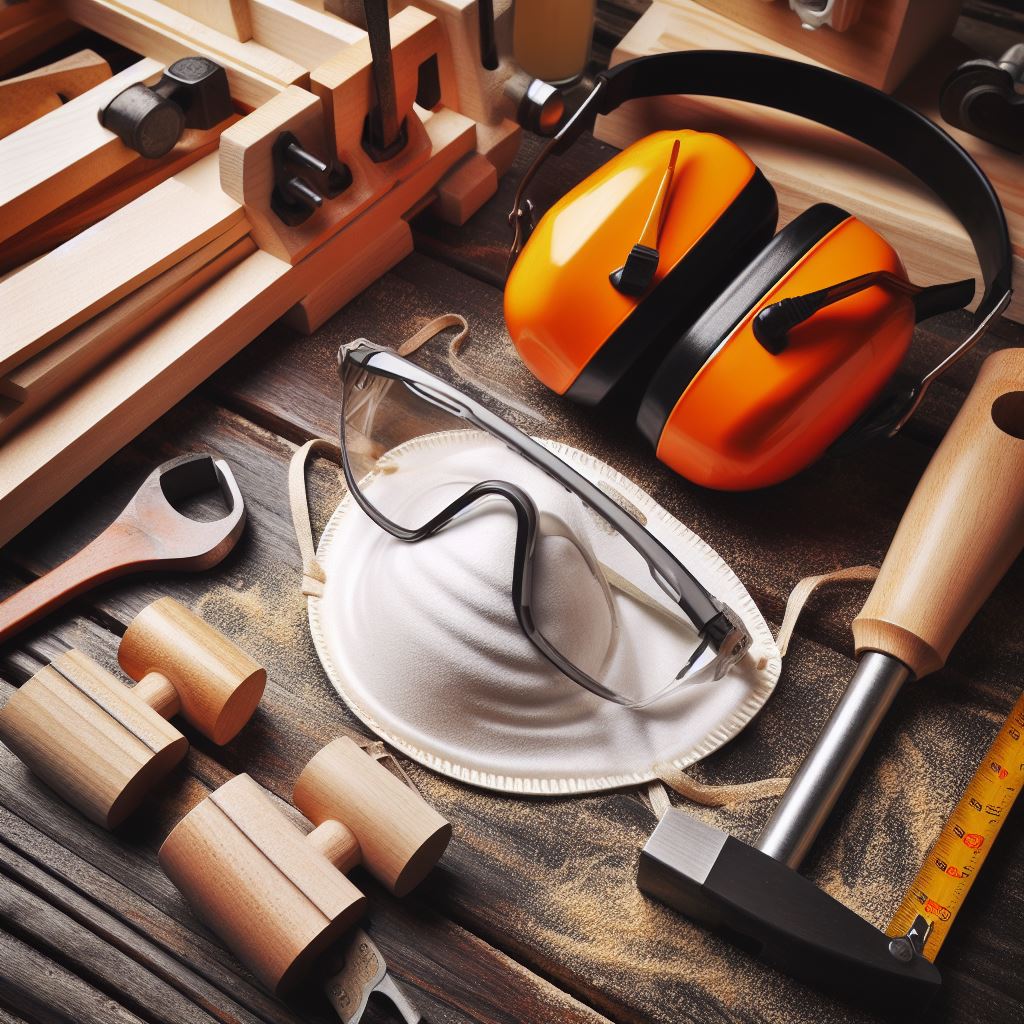
Introduction
Operating dangerous power tools and handling lumber requires proper protective gear. This guide covers specialized woodworking PPE to minimize injury risks from impacts, dust, noise, and more while working on projects.
Key Takeaways
- Cut-resistant gloves prevent deep lacerations
- Safety glasses must meet updated ANSI standards
- Look for NRR noise reduction ratings over 25 decibels
Shielding Hands from Harm
Table saws, chisels, and hand planes pose severe laceration dangers. Protecting hands is crucial for continued productivity.
Specialized Gloves
While no glove prevents all injuries, these offer the best protection:
- Cut-resistant gloves like HexArmor with polyethylene and glass fiber shield from deep cuts
- Tight-fitting coupled latex gloves worn under cut-resistant provide flexibility and chemical resistance
- Heat-, cold-, and vibration-resistant models for specific tasks
- High dexterity options for detail work
Maintenance
Inspect gloves before each use and discard at the first sign of deterioration. Replace frequently as materials break down over time.
Hand protection forms the front line of defense when working wood.
Guarding Eyes from Flying Debris
Eye injuries permanently damage vision. Wood chips, sawdust, sparks, and chemicals pose dangers.
Eyewear Standards
Wear fully certified ANSI Z87.1 safety glasses or goggles meeting updated impact resistance standards. Key traits include:
- Polycarbonate lens material
- 99.9% UV protection
- Anti-scratch/anti-fog
- Side shields
Prescription Compatibility
Install side shields on prescription glasses for protection. Or wear updated prescription safety glasses made specifically for woodworking with wraparound coverage.
Never take risks with vision!
Preventing Noise-Induced Hearing Loss
Table saws and planers roar over 100 decibels. Prolonged noise causes permanent hearing damage. Reduce sound levels with protective earmuffs and earplugs.
Noise Reduction Ratings
Look for NRR ratings above 25 decibels when selecting hearing protection. Opt for higher filtration with dangerous tools:
- Passive earmuffs rating NRR 25-30 dB
- Electronic earmuffs amplifying voices but filtering louder impacts
- Disposable foam earplugs or reusable filtered plugs rating NRR 30+ dB
Layered Protection
Combine over-ear muffs plus in-ear disposable or filter plugs for extremely loud tool dB ranges over 110, exceeding occupational limits.
Don’t lose the ability to enjoy finish carpentry!
Blocking Lung Irritants
Airborne dust chemicals harm respiratory health over time. Prevent inhalation with protective masks.
Particulate Mask Types
Wear properly fitted N95 respirators clearing 95% of particles. Consider upgrades:
- Half-mask respirators with removable P100 filters blocking 99.97% of particulates
- Full-face respirators also protecting eyes and face
Chemical Cartridges
Install organic vapor or acid gas cartridges for solvents and chemicals. Multi-gas cartridges filter both categories of vapors released by glue, paint, oils, etc.
Inhale safely in a purified environment.
7 FAQs about Personal Protective Equipment for Woodworking
1. What cut rating is best for woodworking gloves?
Choose gloves rated for cut-resistance levels ANSI Level 3 or 4 including those labeled as cut level A2 to A5 for advanced sharp object protection.
2. Should all eye protection be marked Z87+?
Yes, look for the Z87+ stamp over the old Z87 standard. Or choose marked Z87-2+ passing more rigorous updated testing requirements for high velocity impacts.
3. What hearing protection style works best?
Combine over-ear passive earmuff protection with disposable foam earplugs inserted deeply inside ear canals for layered, amplified defense across all frequencies.
4. Can I use standard construction masks?
No, the large gaps, fabric media, and lack of filtration in basic dust masks permit dust and chemical vapors to easily enter airways. Only trust tested, well-fitted respirators.
5. Where can I buy PPE for woodworking?
Many home improvement warehouses offer basic gloves, glasses, or disposable masks. For specialty protective equipment and replacements, check woodworking supply retailer websites.
6. How should PPE be cleaned and stored?
Follow individual manufacturers cleaning procedures. Use antimicrobial wipes on reusable gear. Store equipment away from dust and moisture extending service life.
7. When should I replace worn PPE?
Inspect gear before each use and discard at the first sign of deterioration including scratched lenses, stiff gloves, cracked welds, loose filter seals, etc. Most have limited lifespans.
Protect Yourself Through All Stages
Wearing proper protective equipment tailored for woodworking applications reduces injuries from a variety of shop risks. Guard your hands, eyes, ears, lungs, and body when measuring, cutting, assembling, and finishing pieces.
Stay safe and have fun crafting!

